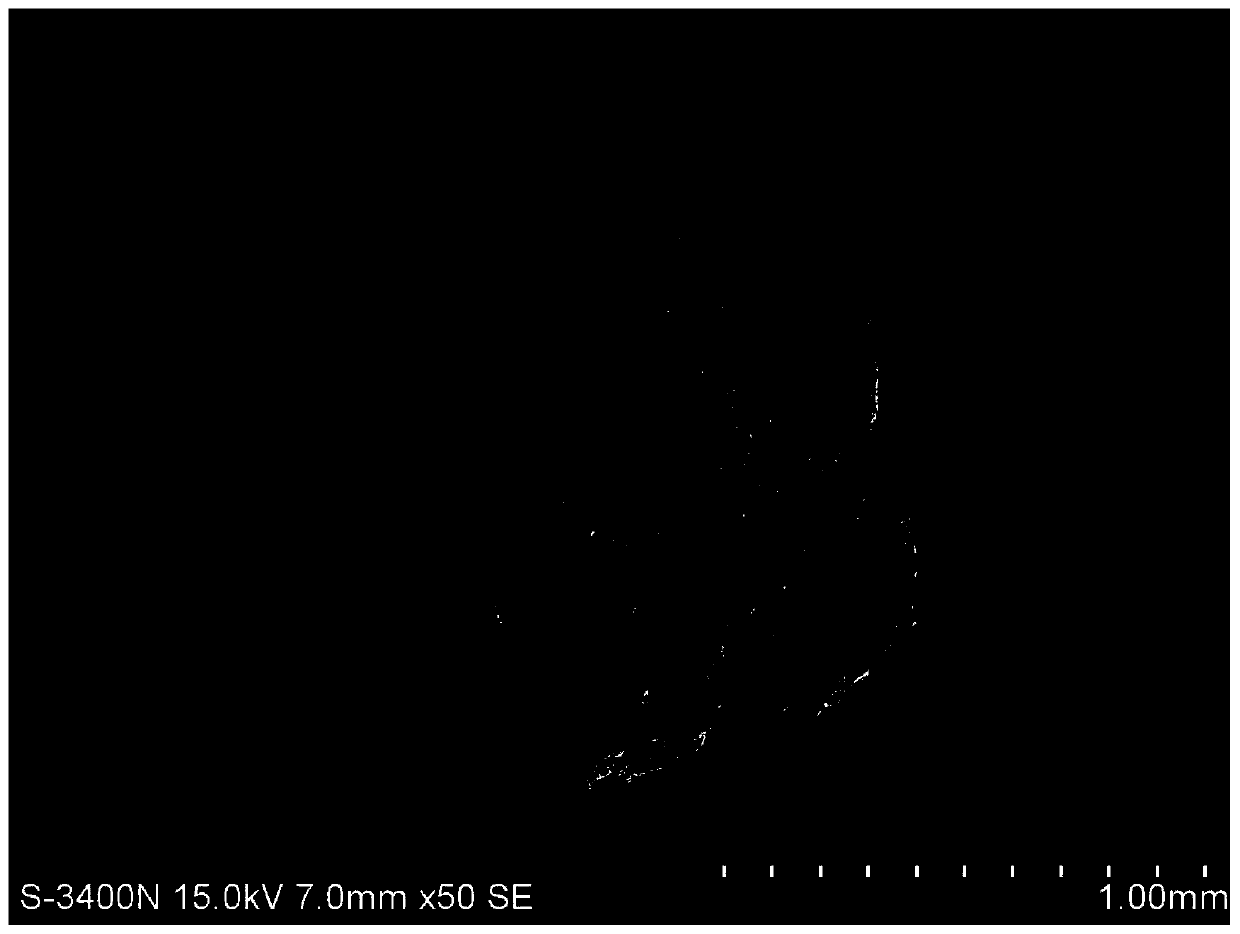A kind of sucrose silkworm excrement composite carbon material and its preparation method and application
A composite material and composite carbon technology, applied in the fields of botanical equipment and methods, applications, chemical instruments and methods, etc., can solve the problems of non-target biological damage to the environment, excessive pesticide residues in agricultural products, and low pesticide utilization efficiency, etc. The effect of reducing the reaction rate of the branch, reducing the amount of solvent used, and reducing the discharge of waste liquid
- Summary
- Abstract
- Description
- Claims
- Application Information
AI Technical Summary
Problems solved by technology
Method used
Image
Examples
Embodiment 1
[0035] A kind of preparation method of sucrose silkworm excrement composite material, comprises the following steps,
[0036] (1) Mix and swell the original silkworm excrement and deionized water according to the mass-to-body ratio of 1:100. After swelling at 30°C for 3.0 hours, remove the silkworm excrement and freeze-dry it. First, freeze and pretreat at -20°C for 4 hours. Then lower the temperature to -60° C. and freeze-dry for 24 hours to obtain freeze-dried silkworm excrement. in N 2 In the atmosphere, 10.0 g of freeze-dried silkworm excrement was raised to 500°C at a heating rate of 5°C / min, kept at 500°C for more than 5.0h, and then cooled to room temperature to prepare carbonized silkworm excrement.
[0037] (2) Mix 1.0g sucrose powder and 2.0g carbonized silkworm excrement with 50mL deionized water, let it stand for 6h, then centrifuge and dry it, and pass it into N 2 As a modified gas, put 1.0g of the mixed material into the plasma reactor, the input voltage of the...
Embodiment 2
[0040] (1) Mix and swell the original silkworm excrement and deionized water according to the mass-to-body ratio of 1:120. After swelling at 35°C for 2.5 hours, remove the silkworm excrement and freeze-dry it. First, freeze it at -20°C for 3 hours. Then lower the temperature to -55° C. and freeze-dry for 36 hours to obtain freeze-dried silkworm excrement. in N 2 In the atmosphere, 10.0 g of freeze-dried silkworm excrement was raised to 600°C at a heating rate of 5°C / min, kept at 600°C for more than 4.0 hours, and then cooled to room temperature to prepare carbonized silkworm excrement.
[0041] (2) Mix 1.0g of sucrose powder and 4.0g of carbonized silkworm excrement with 75mL of deionized water, let it stand for 10h, then centrifuge and dry it, and pass it into N 2 As a modified gas, 1.0 g of the mixed material was put into a plasma reactor, the input voltage of the reactor was 22 V, and the modification time was 18 min. After modification, it was cleaned with deionized water...
Embodiment 3
[0044] (1) Mix and swell the original silkworm excrement and deionized water according to the plastid ratio of 1:140, swell at 40°C for 2.0 hours, remove the silkworm excrement and freeze-dry it, and first freeze and pretreat it at -25°C for 2 hours, Then lower the temperature to -50° C. and freeze-dry for 48 hours to obtain freeze-dried silkworm excrement. in N 2 In the atmosphere, 10.0 g of freeze-dried silkworm excrement was raised to 700°C at a heating rate of 5°C / min, kept at 700°C for more than 3.0h, and then cooled to room temperature to prepare carbonized silkworm excrement.
[0045] (2) Mix 1.0g sucrose powder and 5.0g carbonized silkworm excrement with 100mL deionized water, let it stand for 14h, then centrifuge and dry it, and pass it into N 2 As a modified gas, 1.0 g of the mixed material was put into a plasma reactor, the input voltage of the reactor was 24 V, and the modification time was 16 min. After modification, it was cleaned with deionized water three time...
PUM
| Property | Measurement | Unit |
|---|---|---|
| adsorption capacity | aaaaa | aaaaa |
| Loading capacity | aaaaa | aaaaa |
Abstract
Description
Claims
Application Information
 Login to View More
Login to View More - R&D
- Intellectual Property
- Life Sciences
- Materials
- Tech Scout
- Unparalleled Data Quality
- Higher Quality Content
- 60% Fewer Hallucinations
Browse by: Latest US Patents, China's latest patents, Technical Efficacy Thesaurus, Application Domain, Technology Topic, Popular Technical Reports.
© 2025 PatSnap. All rights reserved.Legal|Privacy policy|Modern Slavery Act Transparency Statement|Sitemap|About US| Contact US: help@patsnap.com



